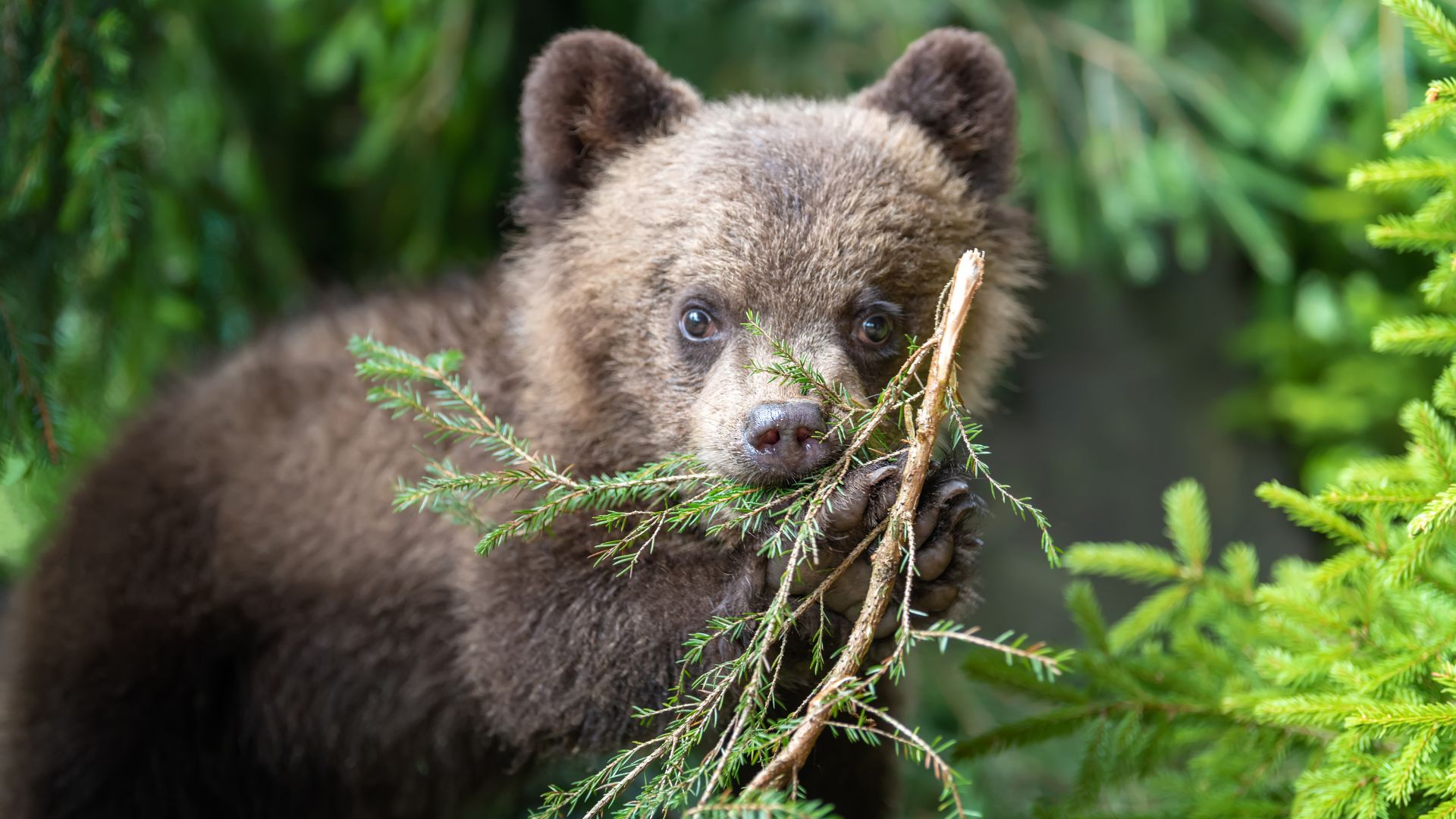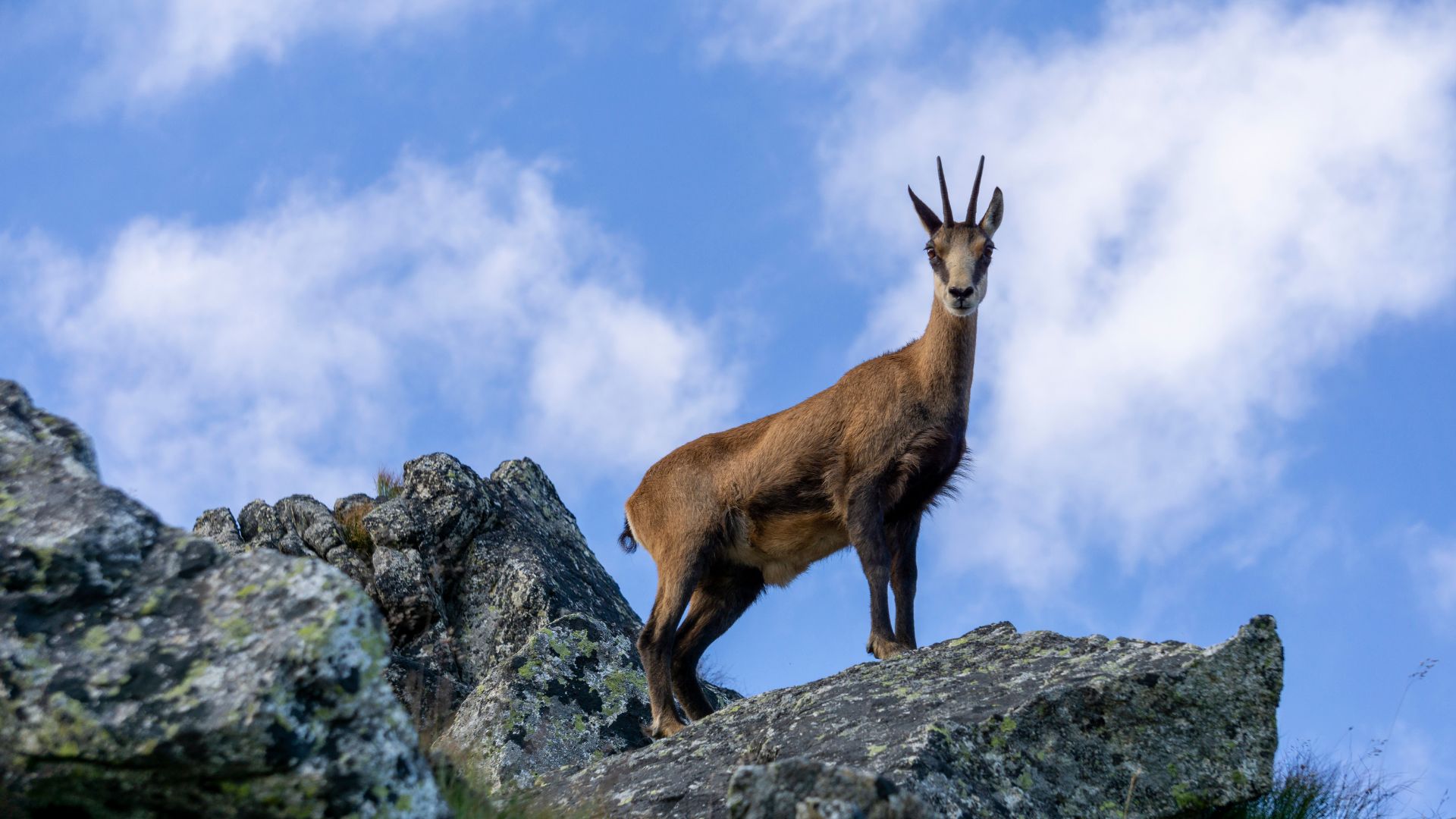
Encountering a bear on a hike? Unlikely
There’s been a lot of talk recently about the increased risk of bumping into wildlife, particularly bears. But should this put you off hiking in the mountains? Let’s set the record straight – the odds of encountering a brown bear during your hike are incredibly slim.
The Liptov mountain ranges are celebrated for their breathtaking beauty and rich variety of flora and fauna. As you hike, you might be lucky enough to spot nimble chamois, graceful deer, or cheeky marmots. But the big question is: do we really want to see a bear in the wild, or would we rather skip a hike altogether to stay on the safe side? To put your mind at ease, let’s look at the facts.
Yes, the brown bear is the largest predator in these parts, but its diet mainly consists of forest fruits, insect larvae, and ants. It’s worth remembering that the mountains are the bear’s natural habitat – we’re just guests. Bears have little interest in people and usually prefer to scavenge for animals that are already dead, or snatch prey from other predators, such as wolves. Smarter ones have developed a taste for food sources left by humans, such as corn or leftovers found at feeding stations for wild game.
Bears live a secluded life deep in the forests, often hiding out in rocky formations, cliffs, overhangs, caves, or amongst fallen trees, where a mother bear might create a den. During the day, they tend to lie low in dense thickets or scrubland. Bears do not seek out human interaction, and if you stick to a few simple rules, you’re unlikely to cross paths with one. Key guidelines include avoiding hiking earlier than an hour after sunrise or later than an hour before sunset, when wildlife is most active.
Another tip is to stay on official marked trails. Bears are very clever creatures and instinctively steer clear of areas with heavy human traffic. Most bear encounters occur off the trails, where human presence is sparse.
The best way to avoid an unwanted bear encounter is to hike in a group, or at least in pairs. A group naturally makes noise – whether it’s chatting, the rustle of gear, footsteps on the trail, or the swish of branches and grass. Animals pick up on these sounds from a distance and tend to move away. If you’re hiking solo, simply making your presence known by speaking softly (but not shouting) in dense areas, tapping your hiking poles on a tree or rock, or carrying a small bell on your backpack can be enough to alert wildlife.
Cyclists need to be extra cautious, as moving quickly through dense terrain can startle animals if they notice too late.
If you do happen upon a bear, maintaining distance is crucial. If you spot a bear from afar, there’s no need to panic, even if it sees you too. Just calmly and slowly back away. A bear might stand on its hind legs, but this isn’t a sign of aggression – it’s simply trying to get a better look. Given enough time and space, a bear will typically choose to retreat rather than attack. By following these simple principles, the chances of surprising a bear in the forest are very low. However, if you’re moving quietly through dense terrain or venture deeper into the woods, it’s possible a bear might notice you too late. In such cases, a bear might bluff an attack, but this is usually just a display before it beats a hasty retreat.
The biggest danger comes from surprising a mother bear with her cubs; in this situation, she may attack to protect her young. It’s a good idea to carry bear spray and know how to use it if needed.
While absolute safety in nature can never be guaranteed, its wild, untamed beauty is one of the main reasons we love spending time there. The key is to explore the mountains of Liptov with respect and common sense, ensuring you come away with only the most beautiful memories.
The article was prepared in cooperation with the Low Tatras National Park.
Important contacts
NON STOP dispatching of the Mountain Rescue Service
18300
NON STOP dispatching of the Helicopter Rescue Medical Service
18155
Emergency call of the integrated rescue system
112






